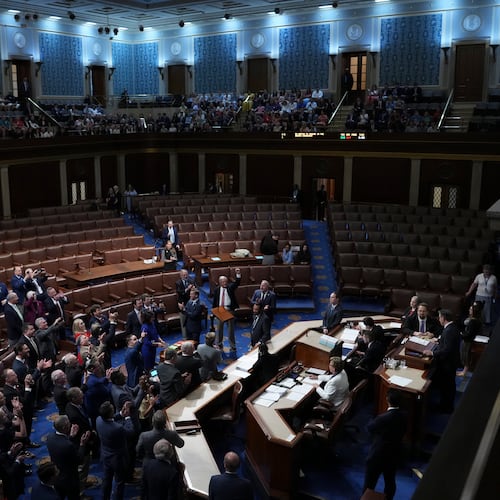Two years ago today, voters in metro Atlanta decisively rejected the $7.2 billion sales tax and project list known as T-SPLOST. Before the referendum, supporters of the measure warned — to win votes, but also out of genuine concern — a defeat could mean a lost decade for enhancing our transportation infrastructure.
Yet their repeated arguments about our dire needs suggested a “plan B” would emerge sooner than later. Sure enough, next Tuesday a committee of lawmakers, civic leaders and business people will begin debating how to pay for more roads and rails. The goal: a bill that can pass the General Assembly next spring.
But the fact politicians no longer fear transportation funding is a radioactive topic doesn’t mean all parties have absorbed the lessons of T-SPLOST’s failure.
Broken public trust remains the No. 1 culprit of that 2012 vote. Any step taken without that in mind may as well be on a treadmill. It will get us nowhere.
There is a school of thought that our leaders should make the case for new funding now, and figure out how to spend it later. Those who think that way have it exactly backwards.
The better approach is the one taken since 2012 by Gov. Nathan Deal: Identify critical projects of truly statewide impact and then find the funding for them. Only, we need to do that on a larger scale and a faster timeline.
So here’s what I’d like to see this new committee do:
Start out by gauging the size of the problem, in terms of key improvements the entire state would benefit from. Deal’s initial selection of the interchange at I-285 and Ga. 400 — through which pass not only metro Atlanta commuters, but trucks carrying Dalton carpets and Vidalia onions — fits the bill. Projects of truly statewide significance should be funded by the state, not the local jurisdictions where they happen to lie.
Georgia’s transportation planners are awash in data, so find out how much bang we’d get for the bucks spent on each project — and how long we’d forgo those benefits by waiting decades, in some cases, before having the money to build them. Ask the DOT for a project list prioritized chiefly by that cost-benefit analysis.
Metro Atlanta ought to be well-represented on such a list, but so should other parts of the state. Turning U.S. 27 and 441 into better bypasses of Atlanta, for example, will help move goods to and from Savannah’s deepened port without adding to our traffic congestion.
The job of finding funding, then, becomes a matter of matching money to needs the professionals identified, and which the public can appreciate. That’s the opposite of what happened with the T-SPLOST, which started with the tax and then asked political leaders to find ways to spend all the money.
There aren’t very many funding options, anyway. But one is an absolute mandate: Spend all existing gas-tax revenue on transportation. Today, one-fourth of the state sales tax on fuel goes to the general fund. Until that “fourth penny” is spent on roads or rails, the state has no credibility raising taxes.
With that done, and with a data-driven list of needed projects in hand, the question of more money becomes a matter of “how much, and how fast.” That’s a far sight better than “something, someday.”
About the Author
Keep Reading
The Latest
Featured


